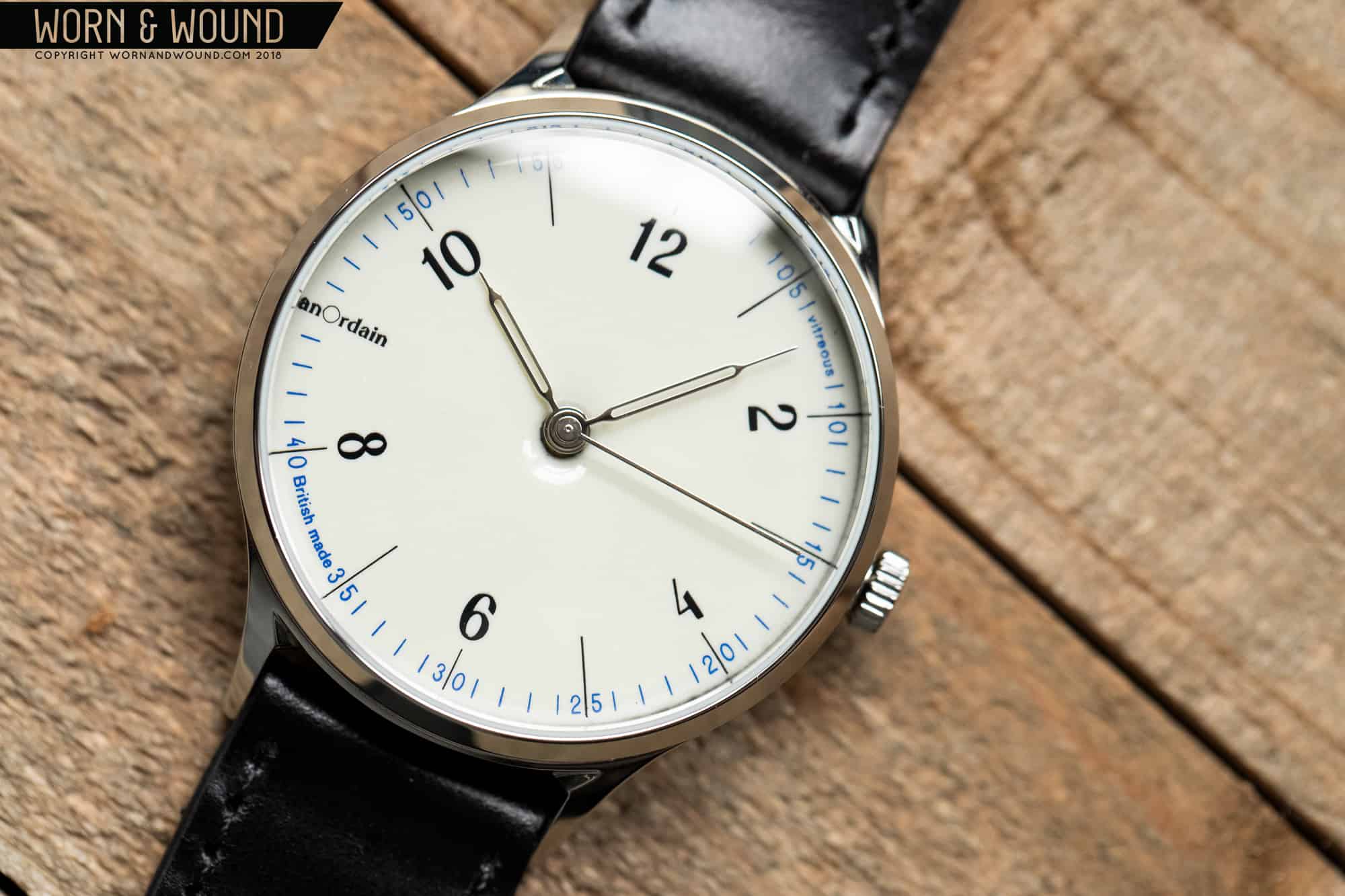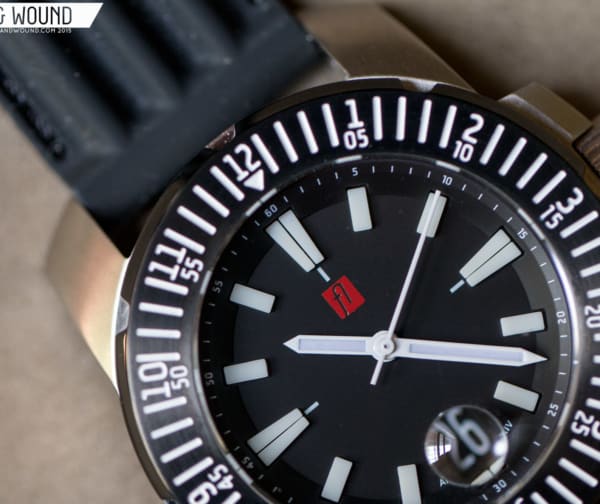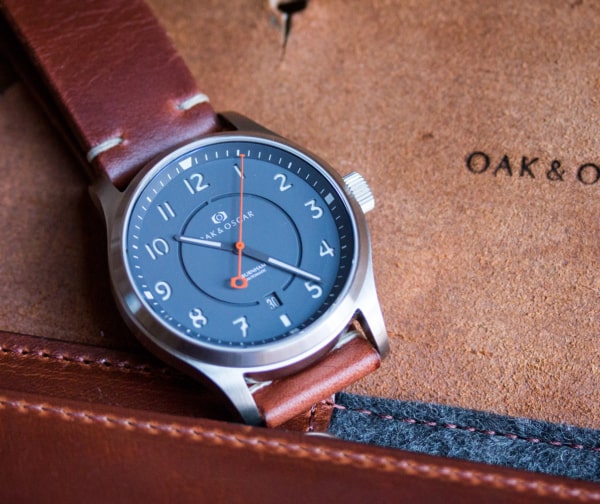For the minimalist 38-millimeter Model 1, Scotland’s anOrdain spent over 4,000 hours over three years trying over 160 enamel types from five different countries before finally making a dial they could keep. Many dials still end up in their scrap pile—a common result due to very hot kiln firing— but today anOrdain can consistently make eight successful dials a week. Those dials come in loud Pink, rich Post Office Red, deep Translucent Blue, Black, and the creamy Iron White found on the watch we have in-hand for review.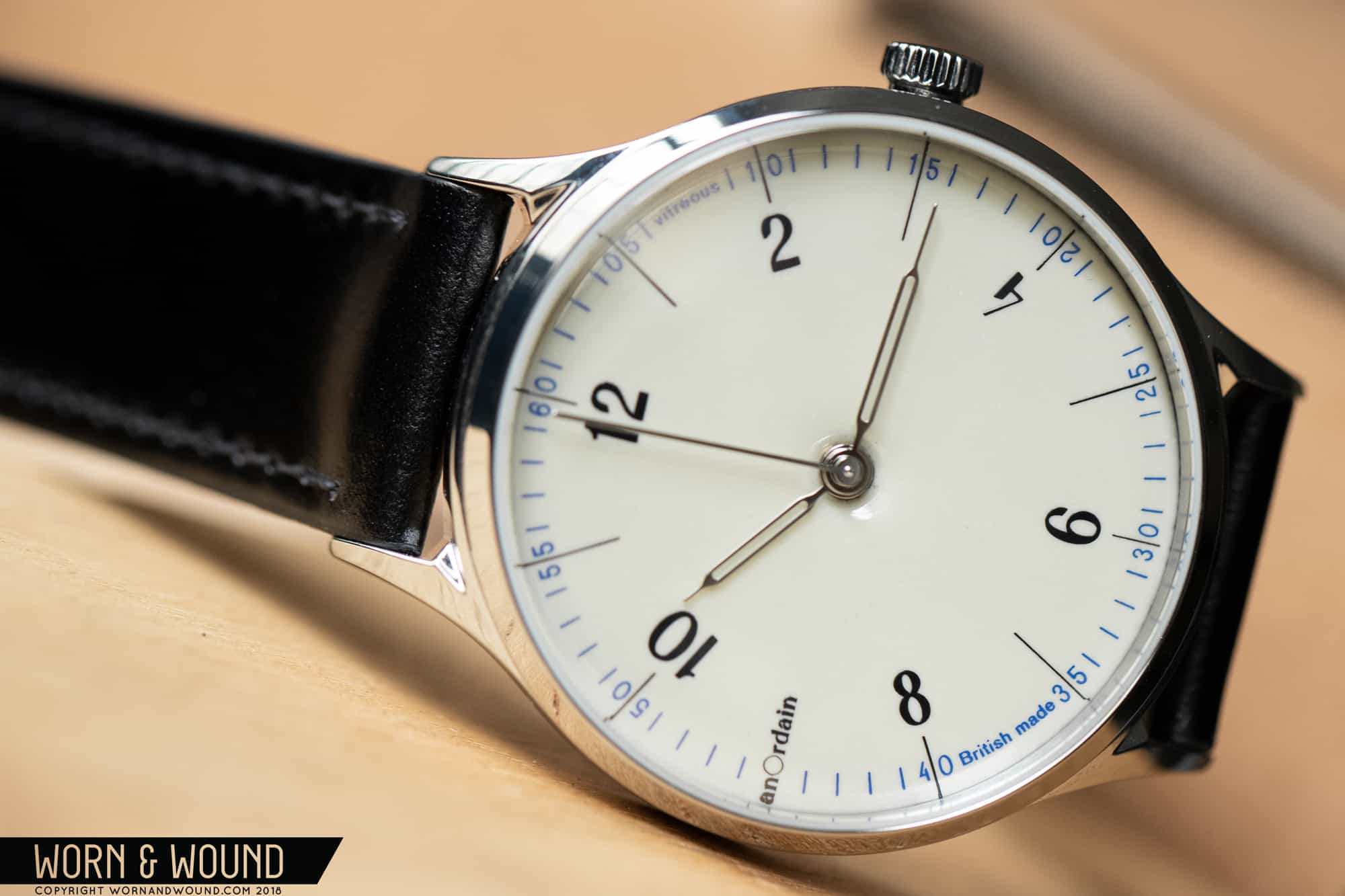
Obviously there’s much more to the Model 1 than the dial, but everything on this watch is there to show off the enamel, and with good reason. Very few materials achieve the depth of color that enamel does, and, given the demands of getting it right, anOrdain is understandably proud to show it off. The result is alluring, to say the least. The Iron White dial is so warm you might call it beige if that didn’t fail to do justice to the complexity of this hue. It takes on surrounding colors like a chameleon, and—much to my surprise—proves that off-white can be thrilling.
Review: anOrdain Model 1
Review: anOrdain Model 1
In the simplest terms, enamel is melted glass with various metal oxides in it that create the color once kiln fired. The technique is about 4,000 years old, and requires fires as hot as 2,000 degrees Fahrenheit (~1,200 Celsius). There are many types of enamel techniques, and the Model 1 features what is typically called Grand Feu (French for “big fire”) or, to use anOrdain’s preferred term vitreous, which simply means made from glass. Between six and nine layers are required to get the desired color and luster. That may sound pretty do-able, but when you consider that the dial has to be uniformly just 1.15 millimeters thick in order to work in the watch, we can understand the high fail rate as well as the skill and patience involved.
However, one of the most charming things about enamel is its inconsistencies, which, if you view it right, are visible on the Model 1. The front crystal is a gently double domed sapphire unit with six layers of anti-reflective coating, assuring an unobstructed view of all the dial’s lovely little “flaws.” To the naked eye, there appears the softest texture, the tiniest flecking, and an uncanny shininess to the Iron Cream enamel. Under a loupe we find small pock marks. It’s refreshing to applaud and enjoy these small inconsistencies, and more than a few watch connoisseurs will agree that every enamel-dialed watch is a unique piece.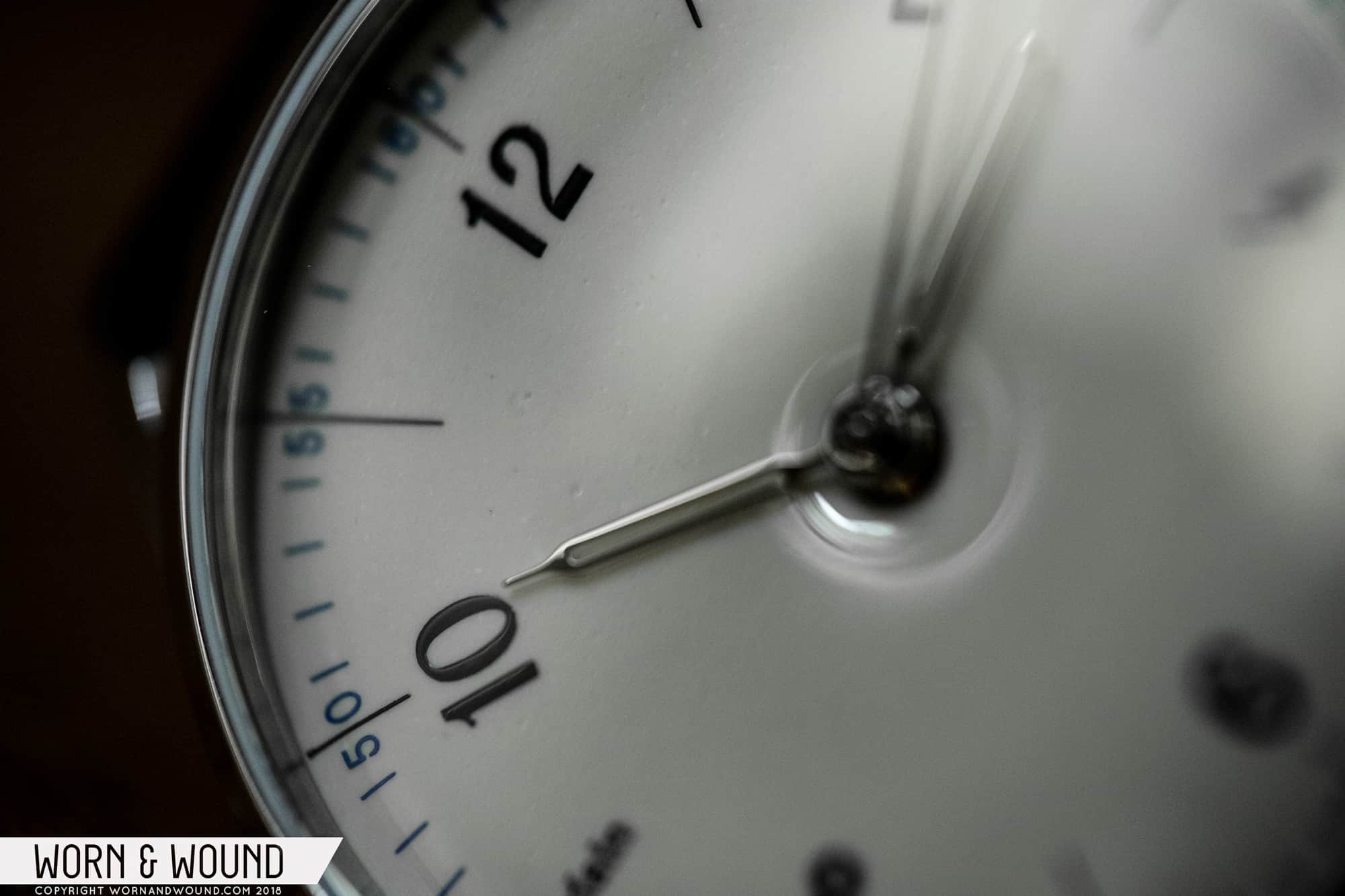
With no rehaut, the dial goes straight to the sides where it curves downward before it meets the inside of the case. Outside is a steeply chamfered bezel, which has a vintage vibe while staying small enough to help maximize the dial diameter. The effect is a watch that looks larger than 38 millimeters—to my eye more like 40 or 41millimeters—while still fitting like a 38-millimeter watch.
The entire case is mirror polished, with clean edges and connections throughout. The lugs curve downward to rest even on a flat surface with the case back and the signed crown completes the traditional profile. That crown is surprisingly easy to operate despite being so small.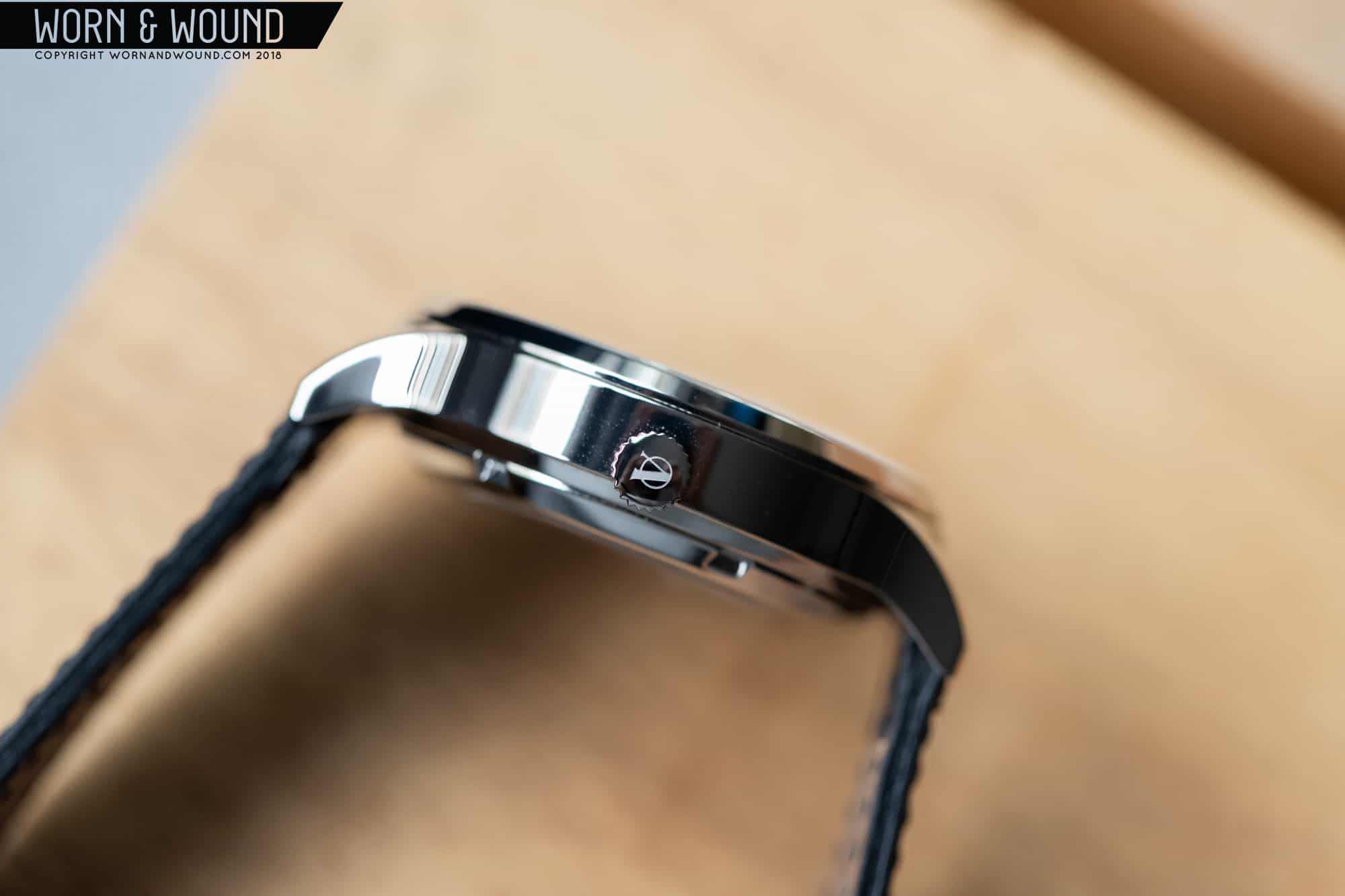
Most interestingly, perhaps, is that the case’s steel is hardened to 800 Vickers, something we’d expect from hardy tool watches more than from a dressy watch like the Model 1, which is rated to just 50 meters of water resistance. As a point of reference, Sinn surface hardens their steel to 1,200 Vickers. The Model 1 isn’t quite as hard, but given that its intended uses are less brutal, I imagine the polishing will stay mirror-bright for years to come.
The screwed-in case back houses a sapphire crystal through which we see the Sellita SW200-1 movement. It’s a solid automatic mechanical unit, and essentially a one-for-one copy of the ETA 2824. I didn’t expect the rotor to be done up in matte black, as that’s decidedly not a vintage touch, but it’s a nice surprise that forces the eye to the exposed parts of the movement. The rotor also sports some understated engraving, including a discrete anOrdian logo.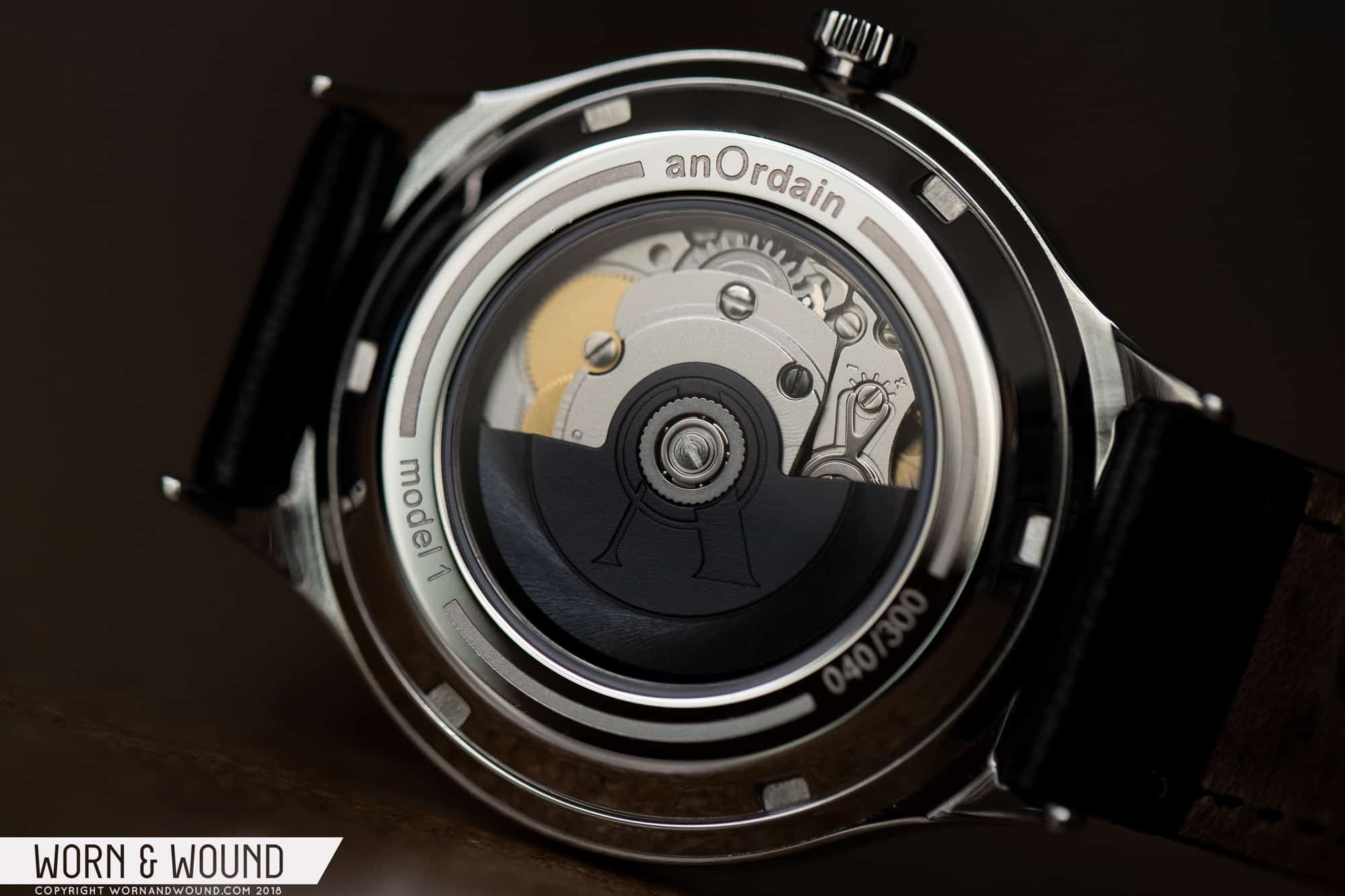
The dial printing is where the individuality of this watch comes forward, and there are as many charming qualities here as there are head-scratchers. The word “anOrdain” takes the nine o’clock spot, and because the “a” is so far out on the dial it dips downward with the dial’s curvature. That arrangement matches the way the other markers reach outside, but shadows make the logo look jammed, perhaps misplaced, even cropped. Another quirk is the way the line markers dissect the blue numerals of the outer minute track (0|5, 1|0, 1|5 etc); this numerical dissection jars my eye, though others have already disagreed.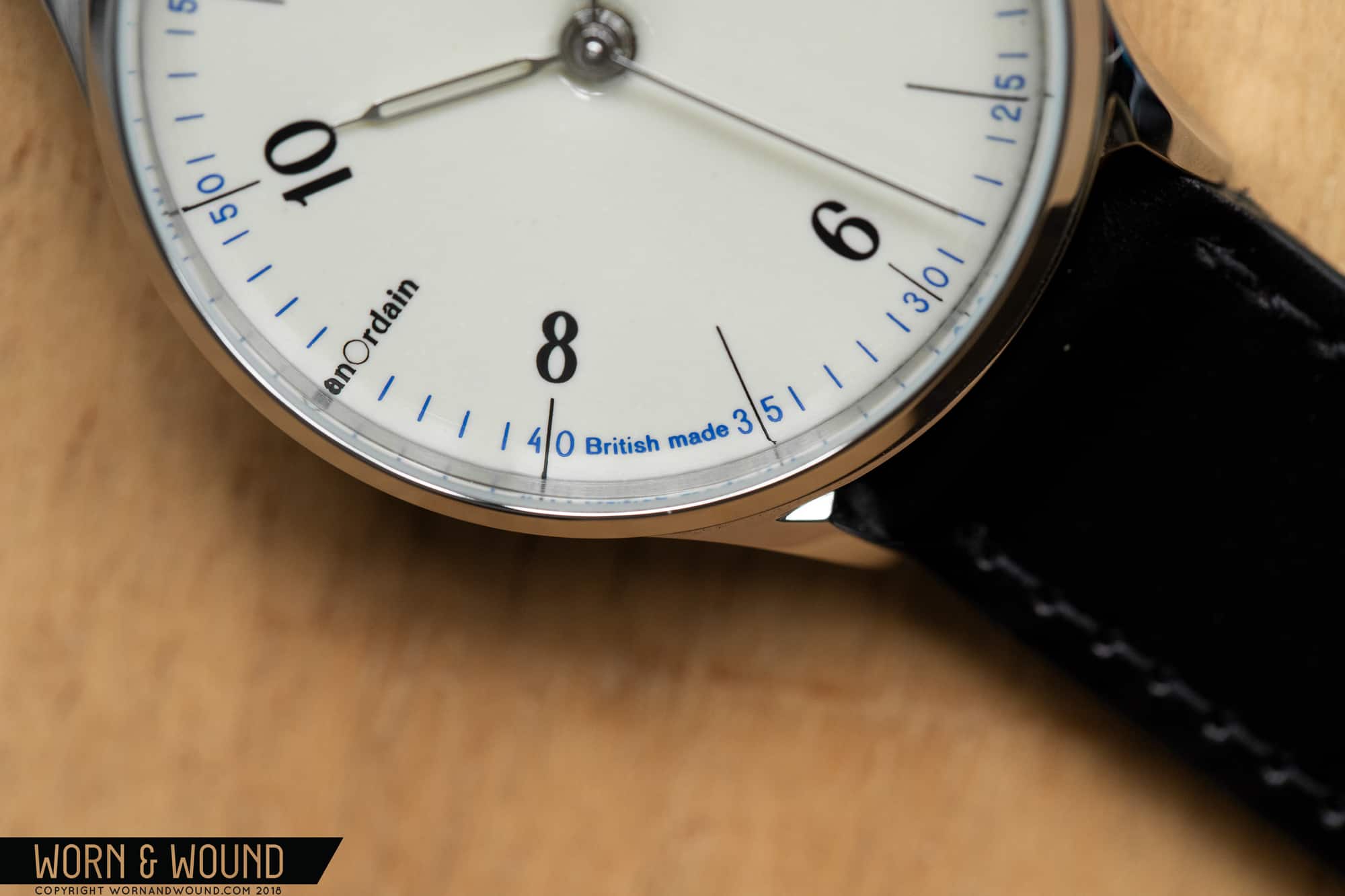
The numerals themselves are really lovely with their vintage-map vibe. I do, however, struggle with the “4.” I’ve contended elsewhere that “4” is the defining element in a numerical font, and the “4” on the Model 1 appears a little too small. The “8” is similarly squished. With that complaint lodged, I’ll temper it with a fondness for the semi-serif’d font itself, which resides on the knife’s edge between antique and contemporary. anOrdain’s graphic designers get some extra love for skipping the date window and letting the enamel take center stage.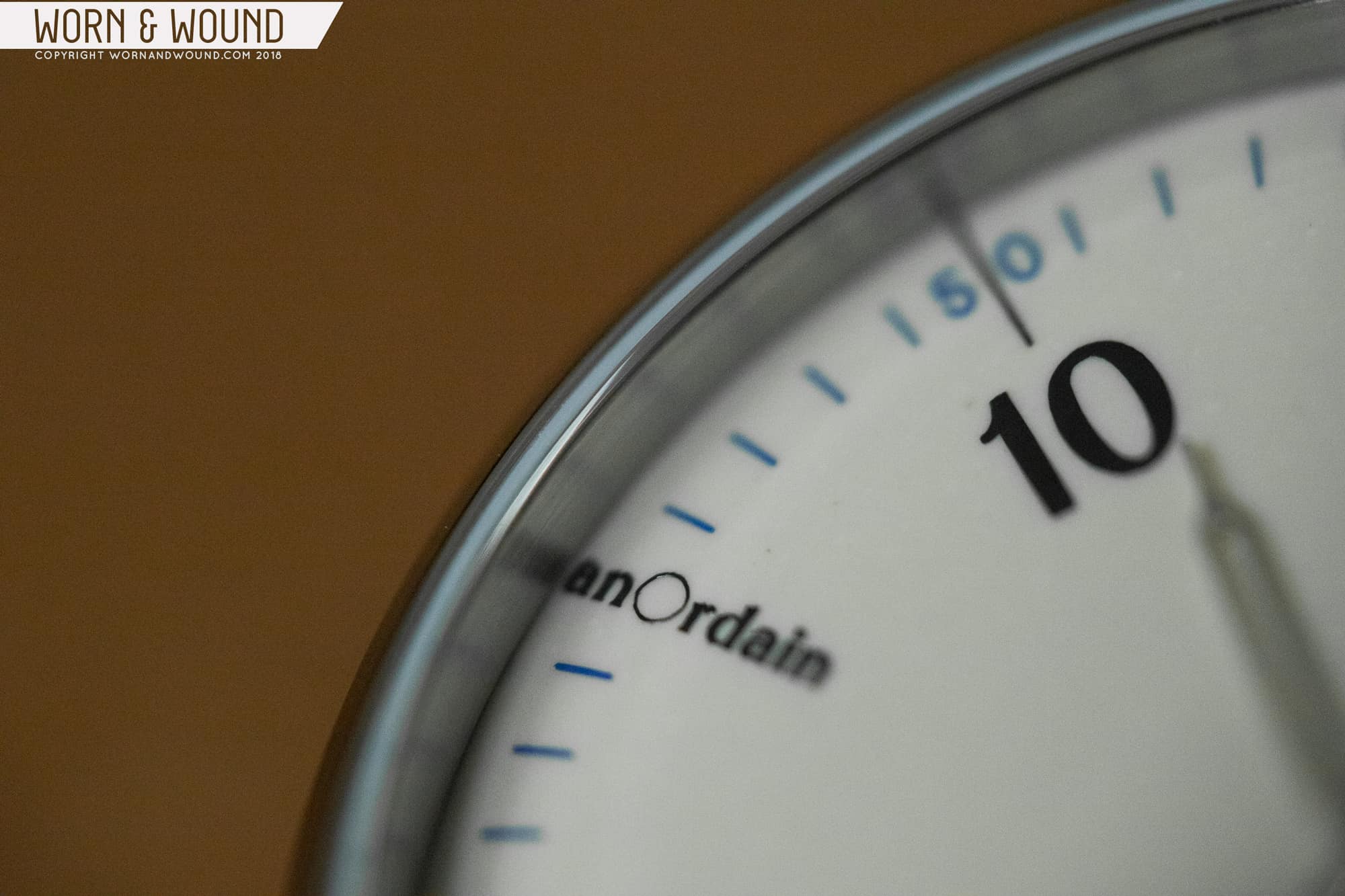
The Swiss company Estima makes the bespoke hands of the Model 1, and these delicate units are perfectly suited to the dial. Skeletonized syringes as the minute and hour hand allow the enamel to show through, and the simple stick seconds hand is a perfect complement. None of the hands have a tail, making for a clear view of the dimple in the center of the dial.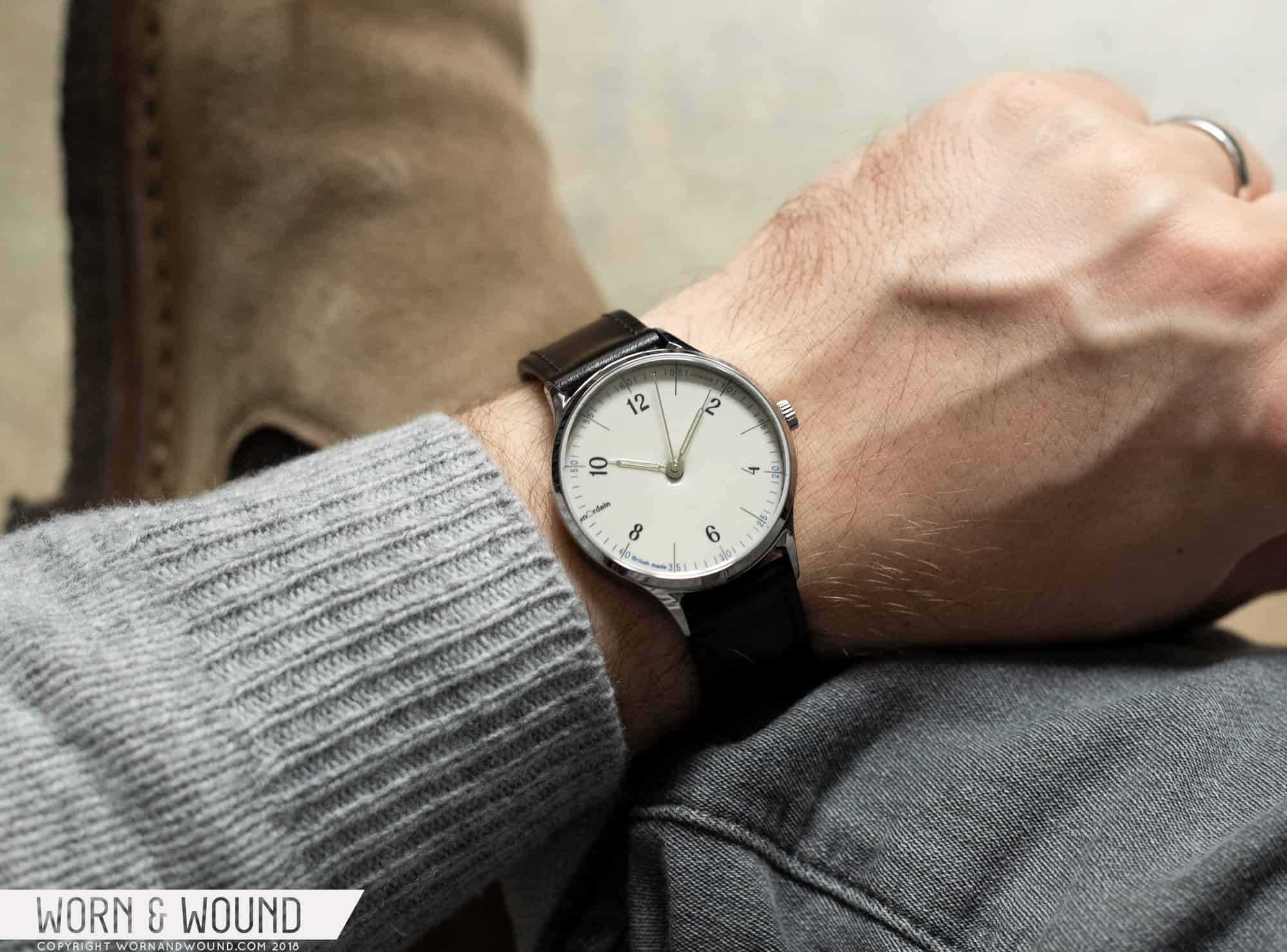
The straps are made in Germany from Italian Shell Cordovan or hypoallergenic suede. Quality is excellent, and the understated colorways—along with nearly every other detail—help keep the enamel front and center.
Packaging from independent watchmakers is a mixed bag, but the Italian leather zipper box that the Model 1 ships in is one of the few that feels like something I might actually use—that is, if it weren’t so big. This isn’t a complaint as much as it is a wish for a nice, smaller, zippered, leather watch case like this.
All told, the Model 1 is a lovely watch. It’s not typical to see so many details stripped back (small bezel and crown) or eliminated (rehaut, date aperture) in order to just let the dial’s material shine through, but given that anOrdain is doing enamel dials successfully in-house, it’s easy to understand, and agree with, their designer’s priorities for the Model 1.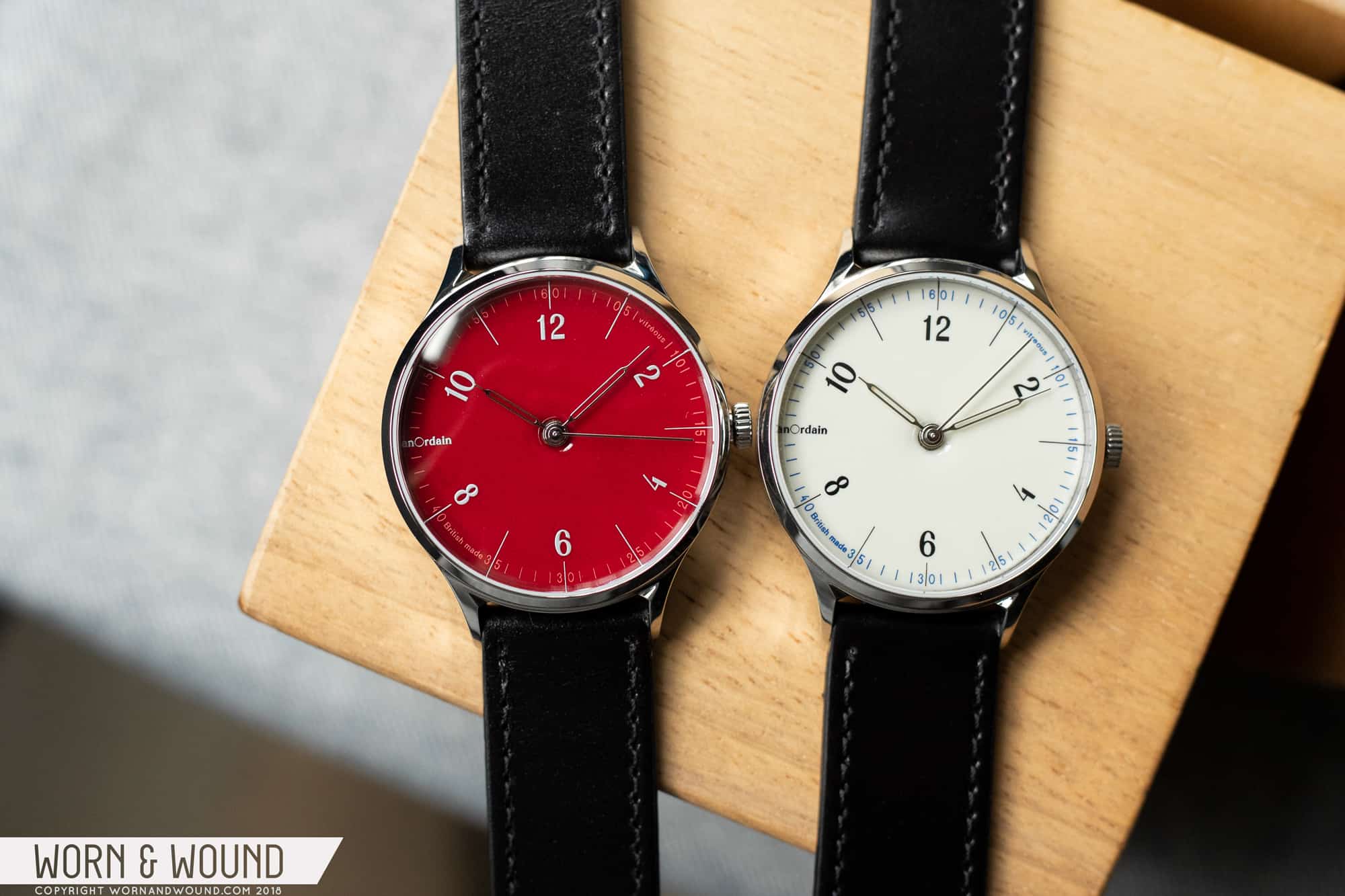
There will be 300 of each colorway available for the Model, and all will sell for roughly $1,330 US with current exchange rates. anOrdain









 Featured Videos
Featured Videos




